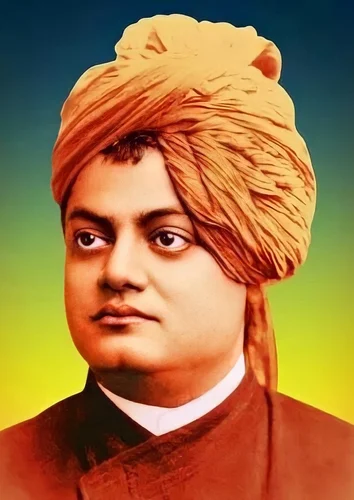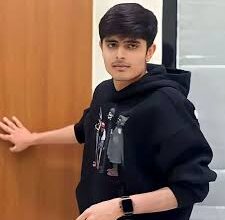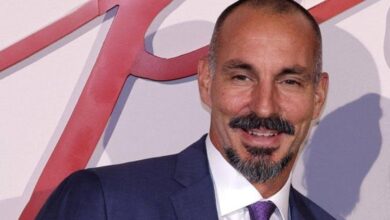Swami Vivekananda Biography, Wikipedia, Personal Life, Family, Career, Net Worth, Death
Swami Vivekananda, born Narendranath Datta, was an Indian Hindu monk, philosopher, author, and religious teacher. As the chief disciple of the mystic Ramakrishna, he played a vital role in introducing Vedanta and Yoga to the Western world and promoting interfaith awareness and spiritual unity.
Profile
| Aspect | Details |
|---|---|
| Full Name | Narendranath Datta |
| Born | January 12, 1863, Kolkata, India |
| Died | July 4, 1902, Belur Math, West Bengal, India |
| Occupation | Hindu monk, philosopher, spiritual teacher, author |
| Guru | Ramakrishna Paramahamsa |
| Major Contribution | Introduced Vedanta and Yoga to the Western world |
| Famous Speech | 1893 Parliament of the World’s Religions, Chicago |
| Philosophy | Neo-Vedanta, universalism, religious tolerance |
| Founded | Ramakrishna Mission and Ramakrishna Math |
| Legacy | Inspired Indian nationalism and spiritual reform; Youth Icon in India |
Early Life and Education
Swami Vivekananda, born Narendranath Datta on January 12, 1863, in Kolkata (then Calcutta), India, was a prominent Hindu monk, philosopher, and spiritual leader. He was born into an aristocratic Bengali Kayastha family during the Makar Sankranti festival. His father, Vishwanath Datta, was a successful attorney at the Calcutta High Court, known for his rational thinking and eclectic interests. His mother, Bhuvaneshwari Devi, was a devout woman with a strong spiritual influence, shaping young Narendra’s religious inclinations. Narendranath was one of nine siblings, including two younger brothers and a younger sister. His grandfather, Durgacharan Datta, a Sanskrit and Persian scholar, left home to become a monk at age 25.
From childhood, Narendra displayed a precocious intellect and a restless spirit. His mother famously remarked, “I prayed to Shiva for a son, and he has sent me one of his demons,” reflecting his mischievous nature. He was fascinated by wandering monks and practiced meditation before images of Hindu deities like Shiva, Rama, and Hanuman. Narendra excelled academically, studying at the Metropolitan Institution and later at Presidency College, Kolkata, where he was the only student to secure first-division marks in the entrance exam in 1879. He graduated from Scottish Church College, mastering subjects like Western philosophy, logic, and European history, while also immersing himself in Indian scriptures, including the Vedas and Upanishads. His voracious reading spanned religion, science, and literature, and he was active in sports, music, and gymnastics.

Swami Vivekananda Personal Life and Spiritual Awakening
Narendra’s early exposure to the Brahmo Samaj, a reformist Hindu movement, shaped his rational and progressive outlook. He questioned traditional practices and sought answers to spiritual queries, famously asking, “Have you seen God?” He joined the Brahmo Samaj in 1881 and Keshab Chandra Sen’s Band of Hope, which discouraged smoking and drinking. However, his transformative encounter came in 1881 when he met Ramakrishna Paramahamsa, a mystic and Kali devotee. Initially skeptical of Ramakrishna’s devotional practices, Narendra was drawn to his personality and teachings. Ramakrishna’s response to Narendra’s question about God “Yes, I see Him as I see you, only in an infinitely intenser sense” profoundly impacted him.
The death of Narendra’s father in 1884 plunged the family into financial crisis, forcing him to seek employment and skip meals to save money. During this period, Ramakrishna guided him to pray to Goddess Kali, but Narendra sought knowledge and devotion over material wealth, marking his spiritual awakening. By 1885, as Ramakrishna battled throat cancer, Narendra and other disciples cared for him in Cossipore. Before his death on August 16, 1886, Ramakrishna named Narendra his spiritual successor, predicting he would teach others. Narendra experienced Nirvikalpa Samadhi, a state of deep meditative absorption, during this time.
Swami Vivekananda Family
Swami Vivekananda’s family played a pivotal role in his development. His father’s rationalism and mother’s piety created a balanced worldview. Bhuvaneshwari Devi instilled Hindu values, teaching him stories from the Ramayana and Mahabharata. Despite their affluence, the family faced hardship after Vishwanath’s death, and Narendra took on the responsibility of supporting his mother and siblings. He remained unmarried, embracing celibacy as a sannyasin (monk), despite his father’s wishes for him to marry. His siblings supported his spiritual pursuits, and the family home at 3 Gourmohan Mukherjee Street is now a cultural center under the Ramakrishna Mission.
Swami Vivekananda Career and Contributions
After Ramakrishna’s death, Narendra and 15 disciples formed a monastic brotherhood at Baranagar, North Kolkata, in 1886. In 1887, he took formal monastic vows, adopting the name Swami Vivekananda, meaning “the bliss of discerning wisdom,” suggested by Raja Ajit Singh of Khetri. From 1888 to 1893, Vivekananda wandered India as a parivrajaka (wandering monk), observing the poverty and diversity of the subcontinent. These travels deepened his resolve to uplift India through spiritual and social reform.
In 1893, Swami Vivekananda represented Hinduism at the World’s Parliament of Religions in Chicago. Lacking credentials, he was aided by Harvard professor J.H. Wright, who vouched for his erudition. His opening address on September 11, beginning with “Sisters and brothers of America,” earned a standing ovation. Quoting the Shiva Mahimna Stotram and Bhagavad Gita, he emphasized universal tolerance, stating, “All paths lead to Thee.” The New York Herald called him “the greatest figure in the Parliament,” and he became an overnight sensation.
Swami Vivekananda spent over two years in the U.S., founding the Vedanta Society of New York in 1894. He traveled to the UK, meeting Max Müller and Paul Deussen, and initiated disciples like Sister Nivedita (Margaret Noble). He introduced his “four yogas” model—Karma, Bhakti, Jnana, and Raja Yoga—adapting Hindu philosophy for Western audiences. His books, including Raja Yoga (1896), Karma Yoga (1896), and Lectures from Colombo to Almora (1897), remain influential.
Returning to India in 1897, Vivekananda founded the Ramakrishna Math and Mission on May 1, 1897, to promote spiritual growth and social service. He advocated education, women’s upliftment, and the eradication of the caste system, emphasizing self-reliance and universal brotherhood. His teachings inspired Indian nationalism, influencing leaders like Subhas Chandra Bose, who praised his synthesis of East and West. Vivekananda’s birthday, January 12, is celebrated as National Youth Day in India.
Swami Vivekananda Net Worth
As a monk, Vivekananda renounced material possessions, living a life of simplicity. Estimates of his “net worth” between $1 million and $2 million are speculative and likely refer to the value of his influence or the Ramakrishna Mission’s assets posthumously. His wealth was spiritual, measured in the global impact of his teachings.
Swami Vivekananda Death
Vivekananda’s health deteriorated due to overwork and ailments like asthma and diabetes. On July 4, 1902, at age 39, he died at Belur Math, West Bengal, while meditating. Disciples reported he attained Mahasamadhi, a state of conscious departure from the body. He was cremated on the banks of the Ganges, near the site of Ramakrishna’s cremation. Vivekananda had predicted he would not live past 40, a prophecy fulfilled.
READ ALSO: Shyam Charan Murmu Biography, Wikipedia, Personal Life, Family, Career, Net Worth
FAQs
Who was Swami Vivekananda?
Swami Vivekananda (1863–1902) was an Indian Hindu monk, philosopher, and disciple of Ramakrishna Paramahamsa, known for introducing Vedanta and Yoga to the West and reviving Hinduism in India.
What was his original name?
His original name was Narendranath Datta.
Why is National Youth Day celebrated?
National Youth Day is observed on January 12, Vivekananda’s birthday, to honor his contributions and inspire youth.
What was his most famous speech?
His speech at the 1893 World’s Parliament of Religions in Chicago, beginning “Sisters and brothers of America,” introduced Hinduism globally.
How did Swami Vivekananda die?
He died on July 4, 1902, at 39, reportedly attaining Mahasamadhi during meditation at Belur Math.



